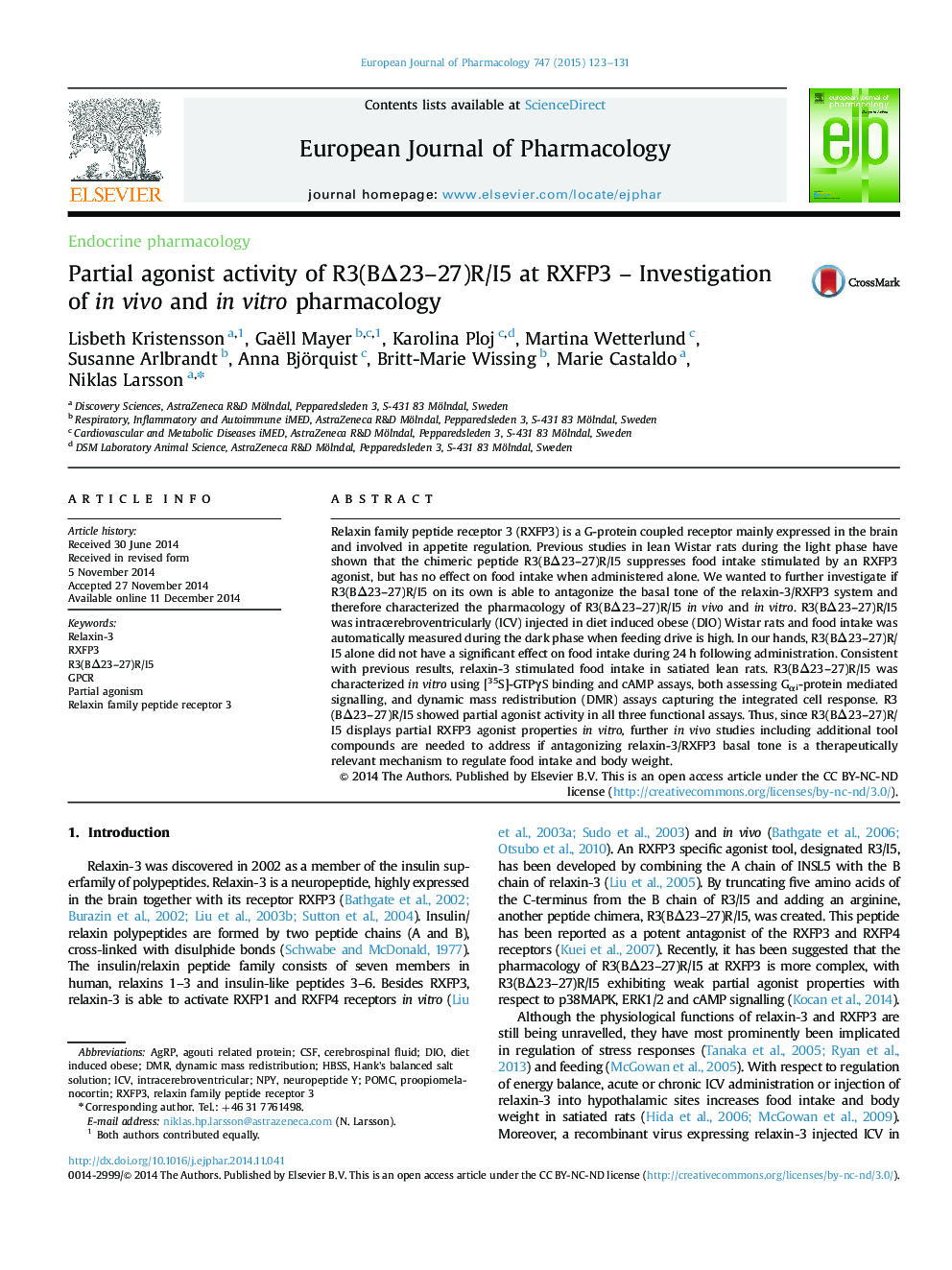| کد مقاله | کد نشریه | سال انتشار | مقاله انگلیسی | نسخه تمام متن |
|---|---|---|---|---|
| 5827827 | 1558934 | 2015 | 9 صفحه PDF | دانلود رایگان |

Relaxin family peptide receptor 3 (RXFP3) is a G-protein coupled receptor mainly expressed in the brain and involved in appetite regulation. Previous studies in lean Wistar rats during the light phase have shown that the chimeric peptide R3(BÎ23-27)R/I5 suppresses food intake stimulated by an RXFP3 agonist, but has no effect on food intake when administered alone. We wanted to further investigate if R3(BÎ23-27)R/I5 on its own is able to antagonize the basal tone of the relaxin-3/RXFP3 system and therefore characterized the pharmacology of R3(BÎ23-27)R/I5 in vivo and in vitro. R3(BÎ23-27)R/I5 was intracerebroventricularly (ICV) injected in diet induced obese (DIO) Wistar rats and food intake was automatically measured during the dark phase when feeding drive is high. In our hands, R3(BÎ23-27)R/I5 alone did not have a significant effect on food intake during 24 h following administration. Consistent with previous results, relaxin-3 stimulated food intake in satiated lean rats. R3(BÎ23-27)R/I5 was characterized in vitro using [35S]-GTPγS binding and cAMP assays, both assessing Gαi-protein mediated signalling, and dynamic mass redistribution (DMR) assays capturing the integrated cell response. R3(BÎ23-27)R/I5 showed partial agonist activity in all three functional assays. Thus, since R3(BÎ23-27)R/I5 displays partial RXFP3 agonist properties in vitro, further in vivo studies including additional tool compounds are needed to address if antagonizing relaxin-3/RXFP3 basal tone is a therapeutically relevant mechanism to regulate food intake and body weight.
Journal: European Journal of Pharmacology - Volume 747, 15 January 2015, Pages 123-131